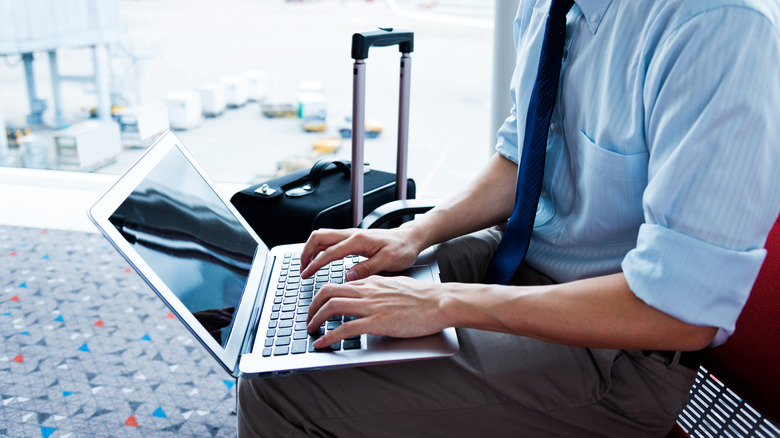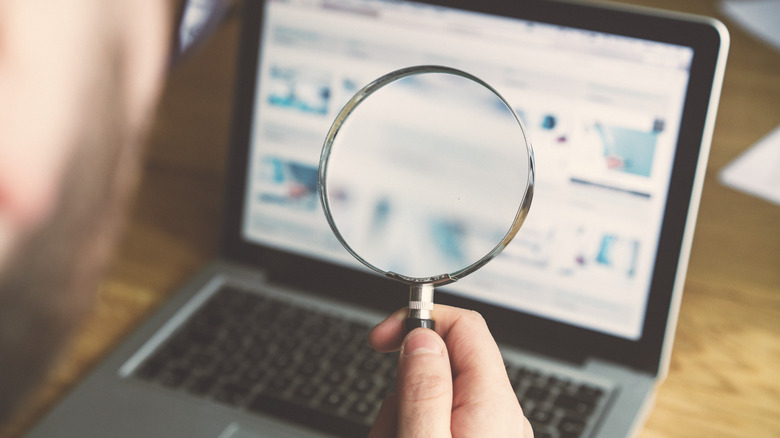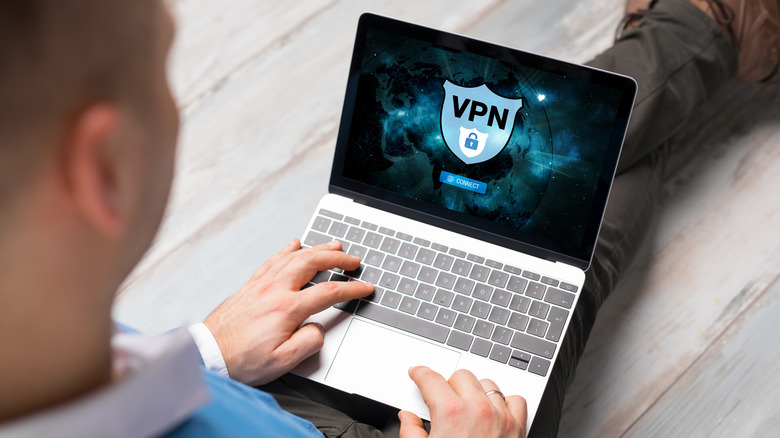The Wi-Fi Warning To Be Aware Of Before Signing On At An Airport
Criminals never seem to run out of ways to scam and cheat people, including at the airport. No, we're not talking about the price of water bottles (even though it feels like we're being robbed). In past articles, we've written about technology dangers at airports (like juice-jacking); but today, we need to chat about internet usage, particularly the Wi-Fi networks you're logging in to.
If you've ever been sitting at a gate waiting for your flight, you know how slow video content can be on apps like TikTok, Instagram, or YouTube. So slow that you might have been tempted to try the airport Wi-Fi (which, if we're being honest, usually isn't much better). If you're tech-savvy, then you might already be aware of the dangers of using airport Wi-Fi. If you haven't heard about this yet, we're here to fill you in. Wi-Fi networks at the airport are just another way bad actors can access your private data and steal your personal information.
How do they do this? By setting up Wi-Fi networks that look like the real thing and getting you to sign in to them. When you sign in, data thieves can see everything you do and pick up sensitive information, such as log-in info. If you're checking a bank statement or work emails, this could end up being a very bad time for you. So, how do you pick out the real networks from the fakes? We'll cover everything below.
Avoid fake Wi-Fi networks with a discerning eye
Luckily for us, many criminals are not very good at what they do. It's usually pretty easy to pick out the fake networks from the real ones. So, why do travelers still click on shady-looking network names? Because they're jet-lagged, dealing with tired or overstimulated kids, overwhelmed with trying to find their gate or flight information, or all of the above. Distracted and tired travelers are prime targets for Wi-Fi network scams — and scams in general.
Even if you're surviving on your last bit of energy, we encourage you to watch out for certain signs of "evil twin" networks, as they're called. These networks are usually similar to the correct Wi-Fi name, but they might use strange or incorrect spelling ("SBUCKS FReE Wi-Fi" is probably not the real Starbucks Wi-Fi), different numbers or capitalization, or odd special characters. If the network is especially slow, it could mean that the connection is being routed through a hacker's mobile phone.
Check around your terminal to see if you can spot signs that display the airport network's name and only use that one. It's also very common for real Wi-Fi networks to require an email to log in. In some cases, you'll also receive an email verification.
When in doubt, use a VPN and surf safely
If you ever connect to a public Wi-Fi, regardless of whether it's a legitimate network or not, assume that your activity is being monitored. Don't log in to platforms with sensitive information or where your personal data may be displayed. There's always a chance someone is watching what you're doing.
Another good habit to keep in mind is to only access websites that use HTTPS encryption, which is very commonplace nowadays. If a website doesn't use HTTPS, most browsers will display a warning. If you trust the website and decide to access it anyway, do so at your discretion and avoid inputting any personal information.
Ultimately, the best way to keep your computer and other Wi-Fi-enabled devices safe is to use a VPN, or Virtual Personal Network. A VPN works by creating a sub-network on your device and encrypting your data so that when you do access a network, your information can't be accessed by any external parties. There are many VPNs on the market that offer similar levels of protection against hackers and data thieves. They can usually be purchased and set up in less than 15 minutes. This is a no-brainer if you care about protecting your data.


